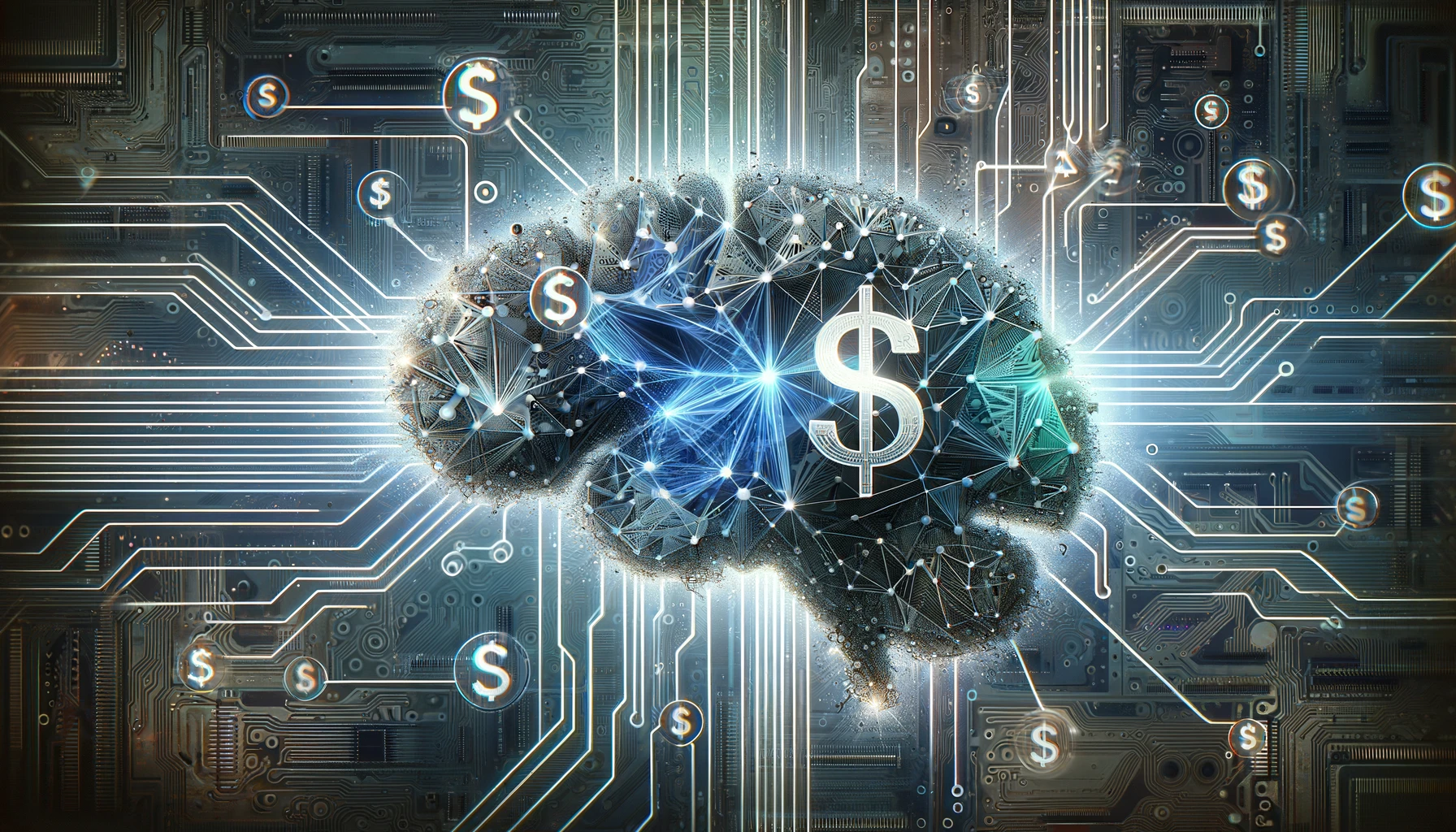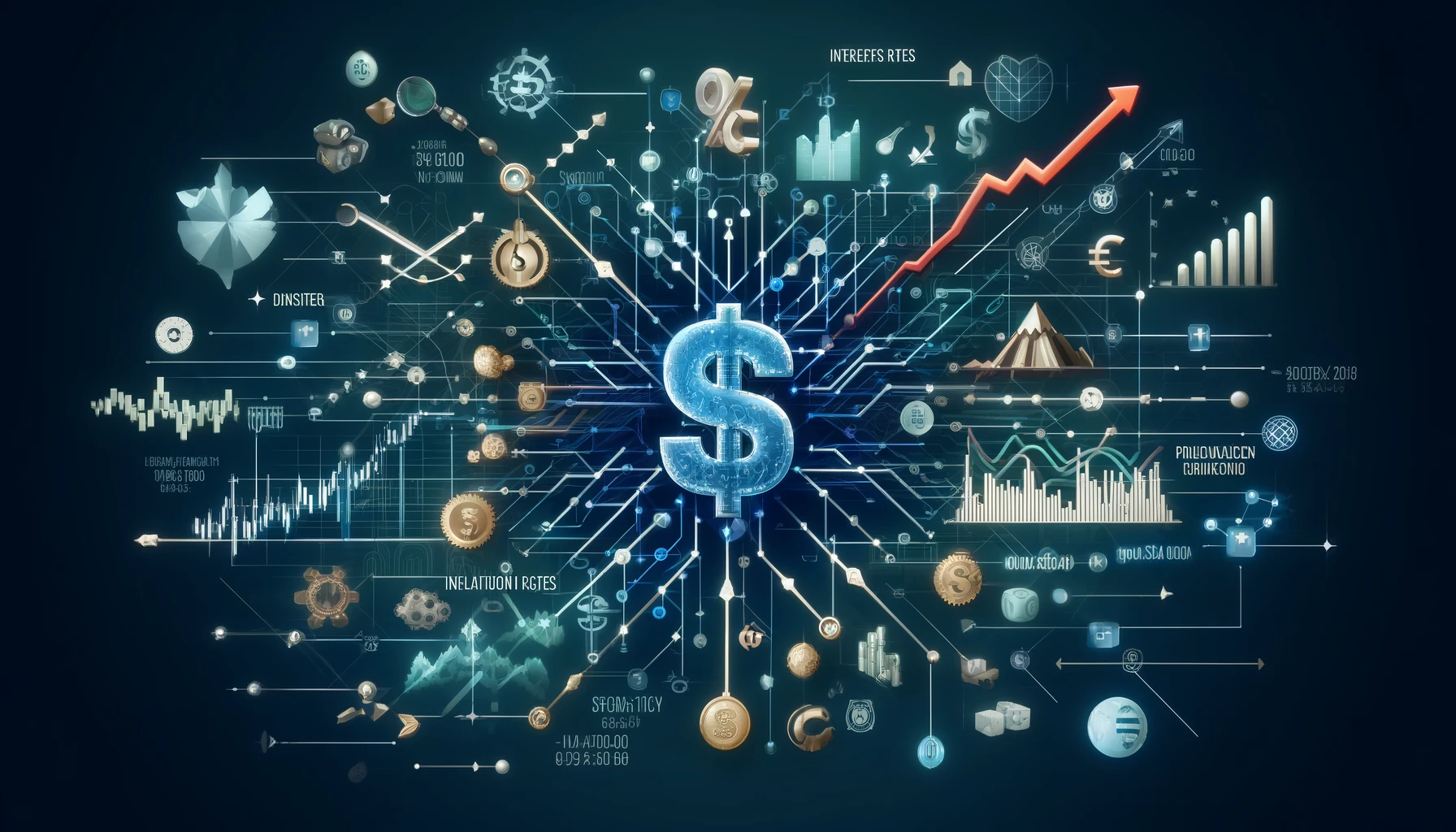Dollar Price Prediction Using Machine Learning
Understanding the Basics of Machine Learning for Currency Valuation
Machine learning is a branch of artificial intelligence that enables computers to learn and improve from experience without being explicitly programmed. In the context of currency valuation, machine learning can be leveraged to analyze vast amounts of historical and real-time data, identify patterns and relationships, and make predictions about future dollar prices. The core principle of machine learning for currency valuation is to develop models that can learn from past data and make accurate forecasts. These models can be trained on a wide range of variables, including economic indicators, political events, market sentiments, and historical price movements, to capture the multifaceted factors that influence currency prices.
Some of the key advantages of using machine learning for dollar price prediction include:
- Improved Accuracy: ML models can identify complex nonlinear relationships and patterns in the data that traditional forecasting methods may miss, leading to more accurate predictions.
- Adaptability: ML models can continuously learn and adapt to changing market conditions, making them more resilient to the dynamic nature of currency markets.
- Scalability: ML algorithms can handle large volumes of data and efficiently process real-time information, allowing for more timely and responsive predictions.
- Automated Decision-Making: ML models can automate the decision-making process, reducing the need for manual intervention and human bias.
The Role of Historical Data in Dollar Price Prediction
Historical data plays a crucial role in the development and training of machine learning models for dollar price prediction. By analyzing past trends, patterns, and relationships, ML models can uncover valuable insights that can be used to forecast future currency movements.
Some of the key historical data sources that can be leveraged for dollar price prediction include:
- Exchange Rate Data: Historical exchange rate data, such as daily, weekly, or monthly closing prices, can provide valuable insights into the long-term trends and short-term fluctuations of the US dollar.
- Macroeconomic Indicators: Economic data, including GDP, inflation rates, interest rates, and trade balances, can help understand the broader economic factors that influence currency prices.
- Political and Geopolitical Events: Historical records of political events, policy changes, and geopolitical tensions can shed light on how these factors have impacted the dollar’s value in the past.
- Market Sentiment Indicators: Data on market sentiment, such as volatility indices, investor confidence, and news sentiment, can provide valuable insights into how market participants perceive and react to currency movements.
By incorporating a wide range of historical data sources, machine learning models can develop a more comprehensive understanding of the factors that drive dollar price movements, leading to more accurate and reliable predictions.
Key Algorithms for Dollar Price Prediction Using Machine Learning
Several machine learning algorithms have been successfully applied to the challenge of dollar price prediction. Here are some of the key algorithms and their applications:
- Linear Regression: Linear regression is a simple and widely used algorithm for predicting continuous values, such as currency prices. It can be used to model the linear relationship between the dollar’s price and various independent variables.
- Decision Trees and Random Forests: Decision trees and random forests are powerful algorithms that can capture nonlinear relationships and handle a wide range of input variables. They are effective in identifying the relative importance of different factors in influencing dollar prices.
- Support Vector Machines (SVMs): SVMs are versatile algorithms that can handle both linear and nonlinear patterns in the data. They have been successfully applied to dollar price prediction, particularly in cases where the relationship between the input variables and the target variable is complex.
- Artificial Neural Networks (ANNs): ANNs are inspired by the human brain and can learn to recognize patterns in complex data. They have shown great potential in modeling the highly nonlinear and dynamic nature of currency markets, and we will discuss their application in more detail later in the article.
- Long Short-Term Memory (LSTM) Networks: LSTM networks are a type of recurrent neural network (RNN) that can effectively capture the temporal dependencies in time-series data, such as currency prices. They are particularly useful for handling the sequential nature of financial data.
- Ensemble Methods: Ensemble methods, such as bagging, boosting, and stacking, combine multiple machine learning models to create a more robust and accurate prediction system. These techniques have been successfully applied to dollar price forecasting, leveraging the strengths of different algorithms.
The choice of algorithm will depend on the specific characteristics of the data, the complexity of the underlying relationships, and the desired level of accuracy and interpretability in the predictions.
Evaluating the Accuracy of Machine Learning Models in Predicting Dollar Prices
Evaluating the accuracy of machine learning models in predicting dollar prices is a crucial step in the process. It helps to assess the model’s performance, identify areas for improvement, and ensure that the predictions are reliable and trustworthy.
There are several metrics that can be used to evaluate the accuracy of dollar price prediction models, including:
- Mean Squared Error (MSE): MSE measures the average squared difference between the predicted and actual values, providing a measure of the overall model error.
- Root Mean Squared Error (RMSE): RMSE is the square root of the MSE and provides a measure of the average absolute error in the same units as the target variable (in this case, the dollar price).
- R-Squared (R²): R-squared is a goodness-of-fit metric that measures the proportion of the variance in the target variable that is explained by the model.
- Mean Absolute Error (MAE): MAE measures the average absolute difference between the predicted and actual values, providing a more intuitive measure of the model’s performance.
- Directional Accuracy: Directional accuracy measures the model’s ability to correctly predict the direction of the dollar’s price movement (up or down).
Additionally, it is essential to evaluate the model’s performance on out-of-sample data, which represents new, unseen data that the model has not been trained on. This helps to assess the model’s generalization capabilities and ensure that it can make accurate predictions on real-world, future data.
By carefully evaluating the accuracy of machine learning models in predicting dollar prices, researchers and practitioners can refine their approaches, identify the most effective algorithms, and develop robust and reliable dollar price forecasting systems.
Data Preprocessing Techniques for Dollar Price Prediction
Effective data preprocessing is a critical step in the development of machine learning models for dollar price prediction. Proper data preprocessing can improve the quality of the input data, enhance the model’s performance, and lead to more accurate predictions.
Some of the key data preprocessing techniques for dollar price prediction include:
- Data Cleaning: Identifying and addressing missing values, outliers, and inconsistencies in the data to ensure the integrity and reliability of the dataset.
- Feature Engineering: Creating new features or transforming existing features to better capture the underlying relationships and patterns in the data.
- Normalization and Scaling: Normalizing or scaling the input features to ensure that they are on a similar scale, which can improve the model’s convergence and performance.
- Time Series Transformation: Applying techniques like differencing, detrending, or seasonal adjustments to the time-series data to remove trends, seasonality, or other non-stationary components.
- Handling Multicollinearity: Identifying and addressing highly correlated features to reduce redundancy and improve the model’s ability to learn the underlying relationships.
- Data Augmentation: Generating synthetic data or applying techniques like data augmentation to increase the size and diversity of the training dataset, improving the model’s generalization capabilities.
By implementing these data preprocessing techniques, machine learning models for dollar price prediction can be more robust, accurate, and reliable in their forecasts.
Feature Selection and Its Importance in Dollar Price Prediction
Feature selection is a crucial step in the development of machine learning models for dollar price prediction. It involves identifying the most relevant and informative features from the available dataset, which can significantly impact the model’s performance and accuracy.
The importance of feature selection in dollar price prediction can be attributed to several factors:
- Improved Accuracy: By focusing on the most relevant features, the model can learn the underlying relationships more effectively and make more accurate predictions.
- Reduced Complexity: Selecting a smaller set of features can simplify the model, making it more interpretable and less prone to overfitting.
- Computational Efficiency: Reducing the number of features can improve the computational efficiency of the model, allowing for faster training and deployment.
- Identifying Influential Factors: Feature selection can help identify the most influential factors that drive dollar price movements, providing valuable insights for decision-makers.
Some common feature selection techniques used in dollar price prediction include:
- Correlation-based Methods: Identifying features that have a strong correlation with the target variable (dollar price) and selecting the most relevant ones.
- Recursive Feature Elimination: Iteratively removing the least important features and evaluating the model’s performance to identify the optimal feature set.
- Wrapper Methods: Using a machine learning algorithm as a black box to evaluate different feature subsets and select the one that provides the best performance.
- Embedded Methods: Combining feature selection with the model training process, such as using the feature importance scores from tree-based models.
By carefully selecting the most relevant features, machine learning models for dollar price prediction can achieve higher accuracy, better interpretability, and greater insights into the factors that drive currency markets.
How Artificial Neural Networks Can Predict Dollar Price Movements
Artificial Neural Networks (ANNs) have demonstrated remarkable potential in predicting dollar price movements. ANNs are inspired by the human brain and are capable of learning complex, nonlinear relationships in the data, making them well-suited for the highly dynamic and multifaceted nature of currency markets.
The key advantages of using ANNs for dollar price prediction include:
- Nonlinear Modeling Capability: ANNs can capture the nonlinear relationships between various factors and the dollar’s price, which is crucial in the context of currency markets.
- Adaptability to Market Dynamics: ANNs can continuously learn and adapt to changing market conditions, making them more resilient to the dynamic nature of currency prices.
- Handling of Diverse Data: ANNs can effectively process and integrate a wide range of data sources, including macroeconomic indicators, market sentiment, and historical price movements.
- Improved Predictive Accuracy: Well-designed and trained ANN models have shown superior performance in predicting dollar price movements compared to traditional forecasting methods.
The process of using ANNs for dollar price prediction typically involves the following steps:
- Data Preprocessing: Cleaning, normalizing, and transforming the input data to prepare it for the ANN model.
- Network Architecture Design: Determining the number of layers, the number of nodes in each layer, and the activation functions to be used.
- Training the ANN Model: Feeding the preprocessed data into the ANN model and adjusting the model’s weights and biases to minimize the prediction error.
- Model Evaluation: Assessing the ANN model’s performance using suitable metrics, such as RMSE, MAE, and directional accuracy.
- Model Refinement: Iteratively improving the ANN model by adjusting the hyperparameters, adding more data, or changing the network architecture.
By leveraging the power of ANNs, researchers and practitioners can develop robust and accurate dollar price prediction systems, providing valuable insights and decision-support tools for investors, traders, and policymakers.
Case Studies: Success Stories of Dollar Price Prediction Using Machine Learning
The application of machine learning in dollar price prediction has yielded several success stories, demonstrating the potential of this approach in the real world. Here are a few case studies that highlight the impact of machine learning in this domain:
Case Study 1: Predicting the Impact of Brexit on the US Dollar A research team at a leading university used a combination of machine learning algorithms, including recurrent neural networks and gradient boosting, to predict the impact of the Brexit referendum on the US dollar. By incorporating macroeconomic data, market sentiment, and historical exchange rate information, the team was able to accurately forecast the short-term and long-term movements of the dollar against major currencies, helping investors and policymakers make informed decisions.
Case Study 2: Algorithmic Trading Strategies for the US Dollar A prominent hedge fund developed a machine learning-based trading system to capitalize on the predictability of the US dollar. The system integrated a range of data sources, including economic indicators, news sentiment, and technical analysis, to generate trading signals. The firm’s traders were able to outperform the market by successfully anticipating dollar price movements and executing profitable trades.
Case Study 3: Central Bank Dollar Price Forecasting A central bank research group employed machine learning techniques, including ensemble methods and deep learning, to improve their dollar price forecasting capabilities. By incorporating a wider range of variables and leveraging the learning abilities of ML models, the central bank was able to enhance the accuracy of its dollar price predictions, which informed its monetary policy decisions and interventions in the currency markets.
These case studies demonstrate the real-world impact of machine learning in dollar price prediction, highlighting the potential benefits for investors, traders, and policymakers in terms of improved decision-making, risk management, and profitability.
The Impact of Macroeconomic Indicators on Dollar Price Prediction
Macroeconomic indicators play a crucial role in the prediction of dollar prices using machine learning. These indicators provide valuable insights into the underlying economic conditions that drive currency markets, and their inclusion in the modeling process can significantly enhance the accuracy of dollar price forecasts.
Some of the key macroeconomic indicators that have been found to be influential in dollar price prediction include:
- Interest Rates: The relative interest rate differentials between the US and other countries can significantly impact the demand for the US dollar, affecting its exchange rate.
- Inflation Rates: Differences in inflation rates between the US and other economies can influence the purchasing power of the dollar, impacting its valuation.
- Gross Domestic Product (GDP): The relative economic performance of the US compared to other countries, as measured by GDP growth, can affect the demand for the dollar.
- Trade Balances: The US trade deficit or surplus can influence the supply and demand dynamics of the dollar, affecting its price.
- Monetary Policy: Changes in the Federal Reserve’s monetary policy, such as adjustments to the federal funds rate, can have a significant impact on the dollar’s value.
By incorporating these macroeconomic indicators into the machine learning models, researchers and practitioners can capture the complex interplay between economic fundamentals and currency markets, leading to more accurate and reliable dollar price predictions.
The integration of macroeconomic data can be achieved through various techniques, such as feature engineering, data augmentation, and the use of multivariate time-series models. Additionally, the relative importance of different macroeconomic indicators can be analyzed using feature selection methods, providing valuable insights into the key drivers of dollar price movements.
Optimizing Machine Learning Models for Dollar Price Forecasting
Optimizing machine learning models for dollar price forecasting is a crucial step to ensure accurate and reliable predictions. This process involves fine-tuning the model hyperparameters, selecting the most appropriate algorithms, and implementing effective strategies to address the unique challenges of currency market forecasting.
Some key strategies for optimizing machine learning models for dollar price forecasting include:
- Hyperparameter Tuning: Systematically adjusting the hyperparameters of the machine learning models, such as the learning rate, regularization strength, and the number of layers in neural networks, to improve their predictive performance.
- Algorithm Selection: Experimenting with a variety of machine learning algorithms, such as linear regression, decision trees, random forests, and neural networks, to identify the most suitable approach for the specific characteristics of the dollar price data.
- Ensemble Methods: Combining multiple machine learning models through techniques like bagging, boosting, or stacking to create a more robust and accurate prediction system.
- Time-Series Modeling: Leveraging specialized time-series models, such as ARIMA or LSTM networks, to capture the temporal dependencies and dynamics inherent in currency price movements.
- Incorporating Real-Time Data: Developing mechanisms to continuously update the machine learning models with the latest available data, enabling them to adapt to the rapidly changing market conditions.
- Cross-Validation and Out-of-Sample Testing: Rigorously evaluating the model’s performance using techniques like cross-validation and out-of-sample testing to ensure the generalizability of the predictions.
- Explainable AI: Employing interpretable machine learning models or techniques like feature importance analysis to provide insights into the key factors driving the dollar price predictions.
By implementing these optimization strategies, researchers and practitioners can develop highly accurate and reliable machine learning models for dollar price forecasting, empowering decision-makers with valuable insights and enabling them to navigate the complexities of currency markets more effectively.
Challenges in Dollar Price Prediction Using Machine Learning
Currency markets are highly complex, dynamic, and influenced by a multitude of interconnected macroeconomic factors, such as interest rates, inflation, economic growth, political stability, and global trade patterns. Capturing and modeling all these variables in a machine learning framework is inherently challenging. Furthermore, the relationships between these factors are often highly non-linear, making it difficult for traditional linear models to capture the underlying patterns.
Future Trends in Dollar Price Prediction and Machine Learning
As the field of ML continues to evolve, researchers and practitioners are exploring new frontiers in dollar price prediction. One emerging trend is the integration of deep learning, a powerful subset of ML that can uncover intricate non-linear patterns in large, multi-dimensional datasets. Deep neural networks have shown promising results in capturing the complex dynamics of currency markets, potentially outperforming traditional statistical models. Another important trend is the increasing adoption of reinforcement learning (RL) techniques. RL-based models can adapt and learn from their interactions with the market, potentially making them more resilient to the frequent regime shifts and structural breaks that characterize currency markets.
Combining Machine Learning with Time-Series Analysis for Dollar Price Prediction
While ML offers a powerful toolkit for dollar price prediction, it is often more effective when combined with traditional time-series analysis techniques. By integrating ML models with established econometric approaches, such as ARIMA or vector autoregression (VAR), researchers can leverage the strengths of both methodologies to create more robust and accurate forecasting systems.
The Importance of Real-Time Data in Dollar Price Prediction Using Machine Learning
One of the key challenges in dollar price prediction using ML is the need for timely, high-quality data. Currency markets are highly volatile and influenced by a myriad of macroeconomic factors, many of which are reported with significant lags. ML models that rely on stale or incomplete data are unlikely to perform well in real-world applications. As such, the development of robust data pipelines and the incorporation of real-time data streams are crucial for enhancing the accuracy and relevance of ML-based dollar price predictions.
Machine Learning Techniques for Managing Risks in Dollar Price Prediction
In addition to improving prediction accuracy, ML can also play a crucial role in managing the risks associated with dollar price fluctuations. Techniques such as anomaly detection, risk modeling, and portfolio optimization can help financial institutions and investors better navigate the volatile currency markets and mitigate potential losses.
Conclusion: The Future of Dollar Price Prediction Using Machine Learning
The application of machine learning to dollar price prediction holds significant promise, but it is not without its challenges. By addressing the complexities of currency markets, leveraging the synergies between ML and traditional time-series analysis, and incorporating real-time data, researchers and practitioners can unlock the full potential of these advanced techniques. As the field continues to evolve, the future of dollar price prediction using machine learning looks increasingly bright, with the potential to transform how investors, policymakers, and financial institutions navigate the ever-changing dynamics of the global currency landscape.













Bases for Xrumer https://dims-tudio.ru